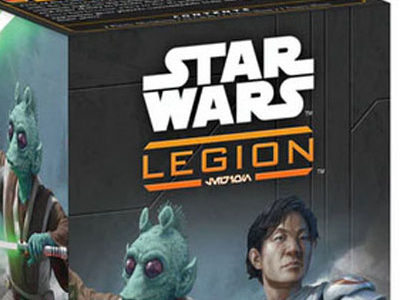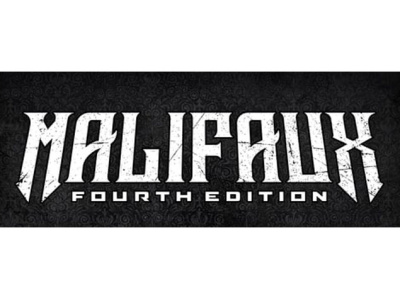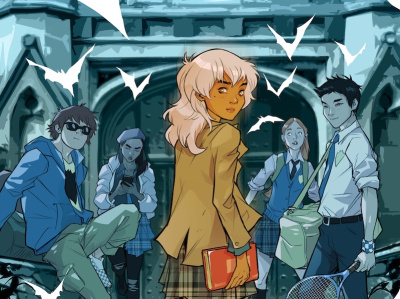 ICv2 got a chance to interview writer Kurt Busiek on his work with Alex Ross on Dynamite’s Kirby: Genesis, due out in May (see “Ross, Busiek Collaborating on 'Kirby: Genesis'”). In this interview, we talk with Busiek about the raw material from Kirby, the narrative approach, and the process of working with Alex Ross.
ICv2 got a chance to interview writer Kurt Busiek on his work with Alex Ross on Dynamite’s Kirby: Genesis, due out in May (see “Ross, Busiek Collaborating on 'Kirby: Genesis'”). In this interview, we talk with Busiek about the raw material from Kirby, the narrative approach, and the process of working with Alex Ross.Why did you decide to take on this project?
Dude, Kirby.
I can add to that -- I'm always interested in working with Alex, and I think we've got a good story to tell, and so on and so forth, but mainly, the attraction is that I get to work with unadulterated Kirby concepts, going back to the source to build on ideas and designs and characters and such that no one else has messed with (or, in the cases where they have, we're setting that aside and going back to the pure Kirby), some of which have never been seen on the comics page at all. And that it benefits Kirby's family, as he'd have wanted them to, that's another big draw.
Getting to work with Kirby's creator-owned material -- that's a huge thrill. That we've got a good team to do it with makes it all the better, but the main hook is still that it's Kirby. His power, his imagination, his ideas, and we get to build on them and turn them into comics.
What era of Jack Kirby’s work have you chosen to revive, and what qualities about those characters and stories intrigued you?
It's not any one era, really. It's anything that he kept the rights to, over the years. I think the farthest we go back is to 1956 and his newspaper strip samples for "Kamandi of the Caves," but if some of the stuff we're using is from earlier, I wouldn't be surprised. And there's material he did in the Sixties, the Seventies, the Eighties -- we wanted to be able to access as much of his output as possible, and that's what the family let us do. So we're drawing on characters he created when he was coming up with New Gods that he never used, ideas for new comics series that he never made a reality, proposal work for Devil Dinosaur or Atlas that didn't make it in to the stories, art commissions, drawings and designs he did for his own amusement and more.
And in every case, I think the reason is that it's powerful stuff, it resonates. Whether it's a completely-worked out series idea or a piece of proposal art or a design from the back of a page of original art, he had a way of communicating beyond just the lines. You can look at each piece and sense a lot about what that character is like, what kind of attitude or approach would fit them or what would feel wrong. There's a richness there that draws you in -- or at least, it draws me in -- and makes me want to write stories about these guys, explore those implications and hints and nuances, see what they do in a wider world.
Someone like Silver Star, Kirby did six issues' worth -- there's plenty there to work with, and I've been a fan of it since it first came out. Some other characters are just single drawings, though, and even they feel like there's a lot going on there, and it's worth digging in to see what it is.
In Marvels you viewed the Marvel Universe from the perspective of an outsider, an ordinary mortal, the photographer Phil Sheldon. How are you approaching the narrative of Kirby: Genesis, do you have a similar narrative device in mind or something different?
Yes to both, I'd say. We're starting with an ordinary guy, a young man who's very much at street level, like Phil Sheldon in Marvels, who gets to be a viewpoint character, to give the reader that street-level perspective, make them feel like it would if they were actually there. But we deliberately kept Phil out of the action -- he was an observer, no more, because what Marvels was about was the view from outside. But Genesis is about change, about chaos and creativity and the world becoming something very different. So our viewpoint character gets into things more than Phil did, goes on a journey into the heart of the cosmic events, and gets to see things both from outside and inside. It's a way we can communicate to the reader not only what it's like to be there, but what it's like to be swept up in it all, to be at the eye of the storm.
Can you explain your working process--how do you go about co-plotting an eight-issue series like this? Who does what?
The short answer is, we cooked up the story together and then handed it over to me for the actual hands-on writing, more or less.
We spent a while talking through ideas, which characters would be best, how we wanted to interpret the unfinished characters, that sort of thing, and based on all that, I worked up an outline and ran it by Alex and the guys at Dynamite. And then we did another round of it all, bashing things around, poking at it for plot holes, changing various characters and their relationships and so on, all in the interest of strengthening the story and making it one we were all passionate about. I revised the outline incorporating all of that, and that’s what got approved by everyone up the line. So it’s a story Alex and I worked up, with oversight and suggestions from Joe Rybandt and the guys at Dynamite. From there on, I’m pretty much taking over. I’m producing finished scripts, and if Alex has concerns when he gets the scripts, we address them as they come up. That’s pretty much how it worked with Marvels, too. We stay in touch, and talk about new material as needed, but the bulk of the co-plotting is represented by that now-approved outline.
Who is the favorite Kirby character you are working with on this project--and has that perception changed as you have gotten into it more?
It's hard to say at this stage, since we're fairly early on in the process. But I'm having a blast writing Galaxy Green and The Wanderer, and some of the more minor characters are a surprising treat to write, too, like Sundance of Mars. But as we go along, I'm sure I'll be surprised by how some of the characters develop -- I haven't even gotten to write the Primals yet, and I'm turning over in my head what their voices will be like. It's all fun, but the only way to really answer comprehensively would be to wait until we're done and look back. It's definitely going to change as we go.
What were Kirby’s strengths and weaknesses as a writer? Do you think he will be remembered as much for his writing as for his art?
He certainly should be, since he didn't just draw in a vacuum, but was heavily involved in the writing all along, from series conception to plot concepts to pacing and more. Storytelling is writing, and Kirby was a storyteller his whole life. But a lot of readers tend to look at writing as the surface stuff, the words on the page, and those weren't always in Kirby's control. And of course, some people thought his scripting was overly stylized, in a way they weren't familiar with, when he did get to do the whole thing. For my part, though, the older I get, the more I want pure Kirby, to get his vision as pure and loud as possible. We can't do that here, since he's not here to do it, but we're trying to honor that vision, by bringing our own skill and talent and instinct to it as strongly as he would have brought his, and trusting that that's how you get the best out of Kirby ideas. You go full-throttle and see where it leads.
But Kirby was simply on of the uncontestable geniuses of American comics, and should be remembered for all he did. The drawing was beautiful, but the stories, the ideas, the drama and humanity and emotion that fueled those drawings -- it was all part of the achievement, and can't be separated out.







